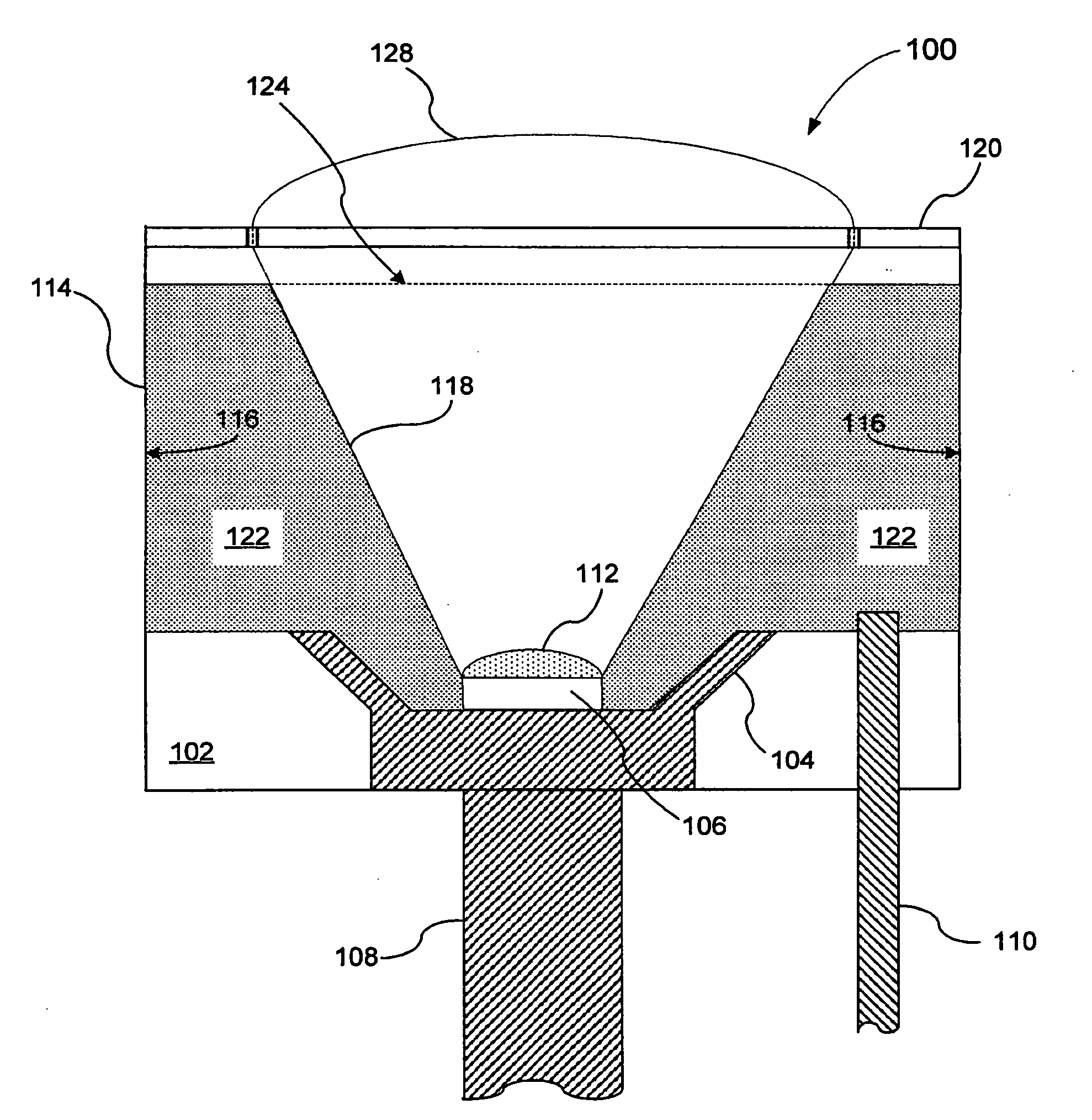Light emitting device having a metal can package for improved heat dissipation
a technology of light emitting devices and metal cans, applied in lighting and heating equipment, electrical equipment, etc., can solve the problems of limited use of led devices, insufficient elements to maintain reasonable moderate temperatures, and common damage to led devices
- Summary
- Abstract
- Description
- Claims
- Application Information
AI Technical Summary
Benefits of technology
Problems solved by technology
Method used
Image
Examples
Embodiment Construction
[0016]In the following description of various implementations, reference is made to the accompanying drawings that form a part of this disclosure, and which show, by way of illustration, specific implementations in which the invention may be practiced. Other implementations may be utilized and structural changes may be made without departing from the scope of the present invention.
[0017]In FIG. 1, a cross-sectional side view illustrating an example of an implementation of a light emitting device that utilizes an hermetically sealed metal can package to house a light source is shown. The metal can package may be filled with an inert, heat conducting gas or liquid. The light emitting device having a hermetically sealed package (“LED-HSP”) 100 includes a substrate 102 having a concave base cavity 104 in which a light source 106, such as a light emitting diode (“LED”), may be placed. As an example, the substrate 102 may be a metal base that may function as a heat sink and may also inclu...
PUM
 Login to View More
Login to View More Abstract
Description
Claims
Application Information
 Login to View More
Login to View More - R&D
- Intellectual Property
- Life Sciences
- Materials
- Tech Scout
- Unparalleled Data Quality
- Higher Quality Content
- 60% Fewer Hallucinations
Browse by: Latest US Patents, China's latest patents, Technical Efficacy Thesaurus, Application Domain, Technology Topic, Popular Technical Reports.
© 2025 PatSnap. All rights reserved.Legal|Privacy policy|Modern Slavery Act Transparency Statement|Sitemap|About US| Contact US: help@patsnap.com



